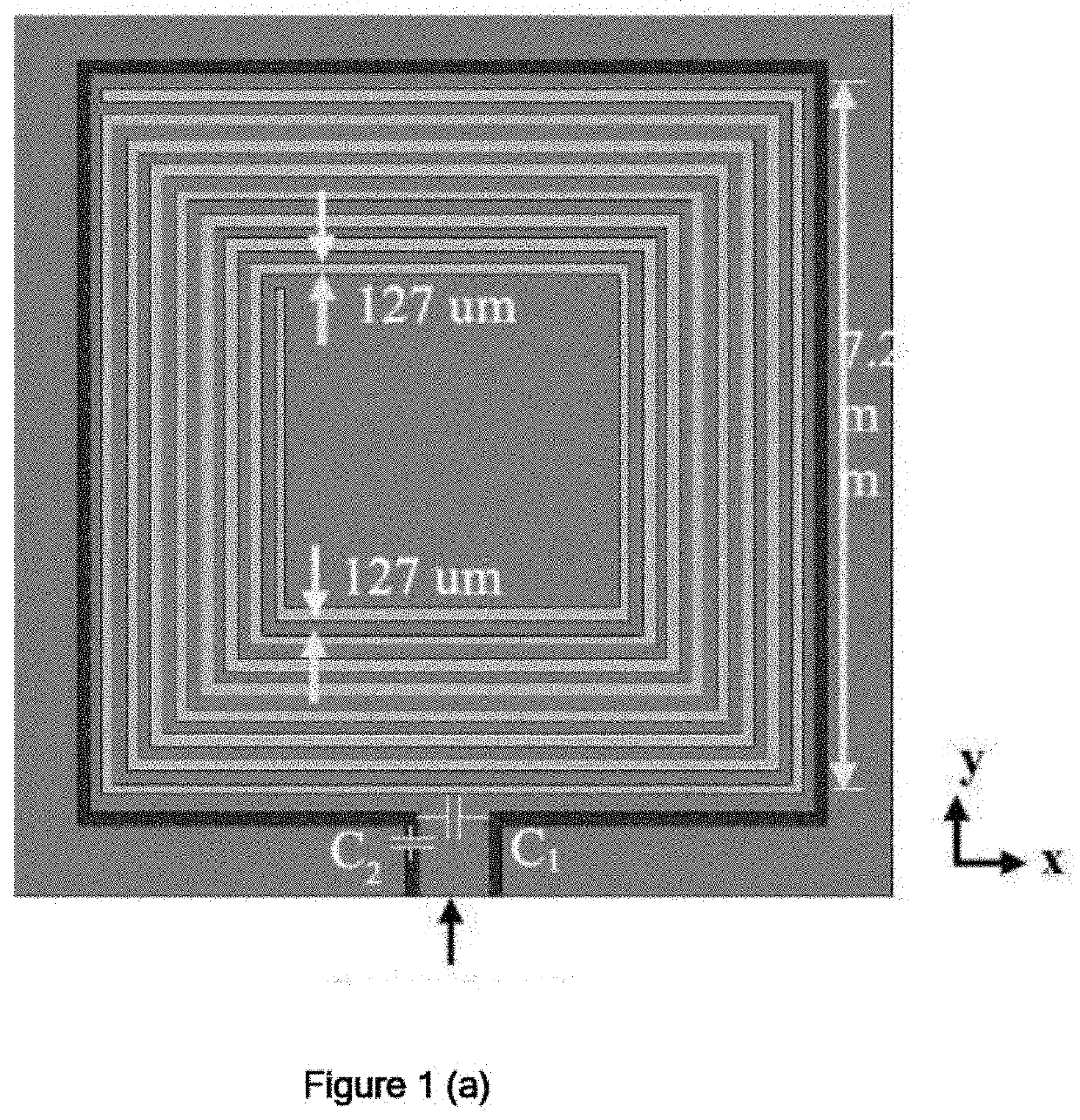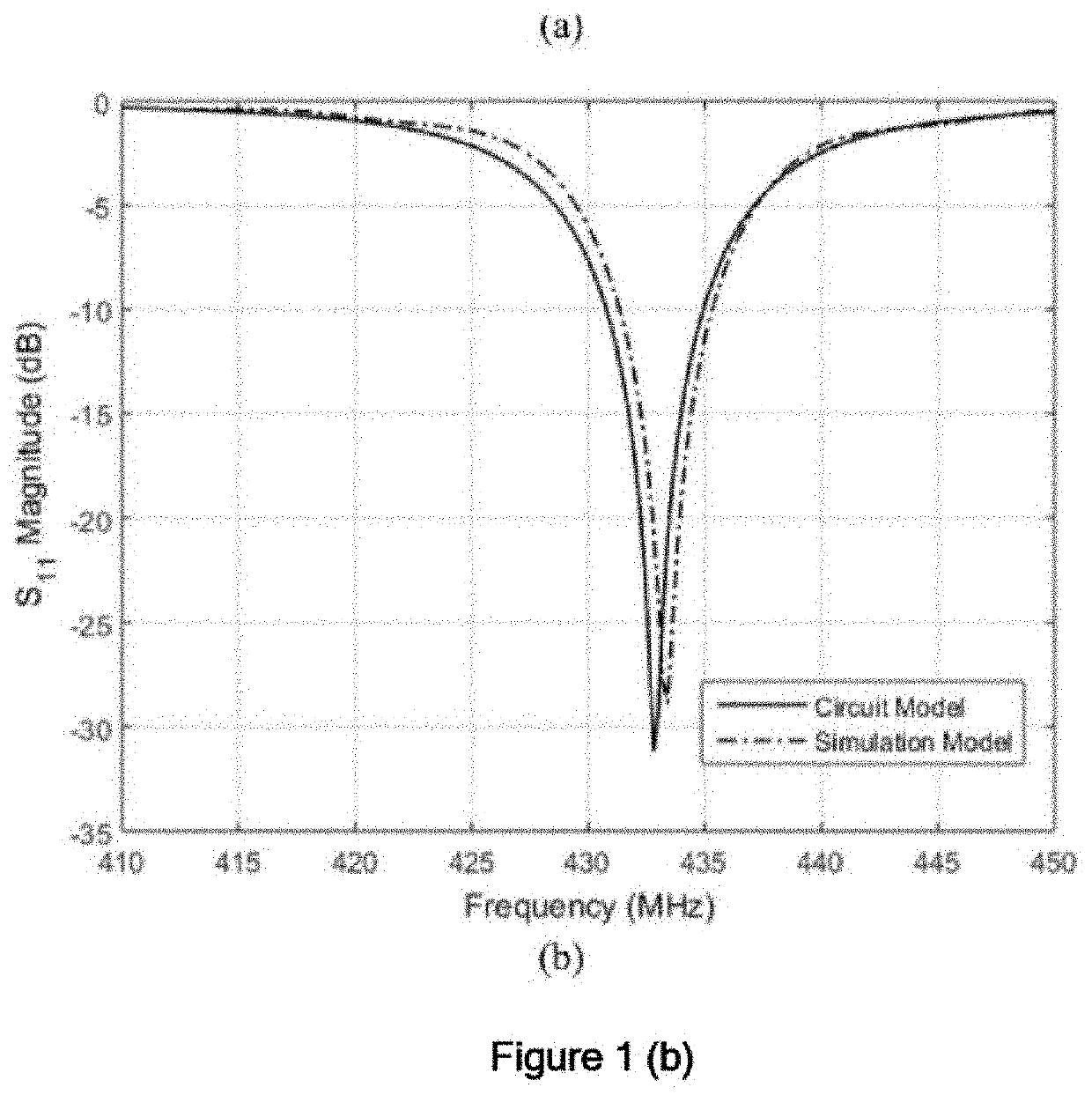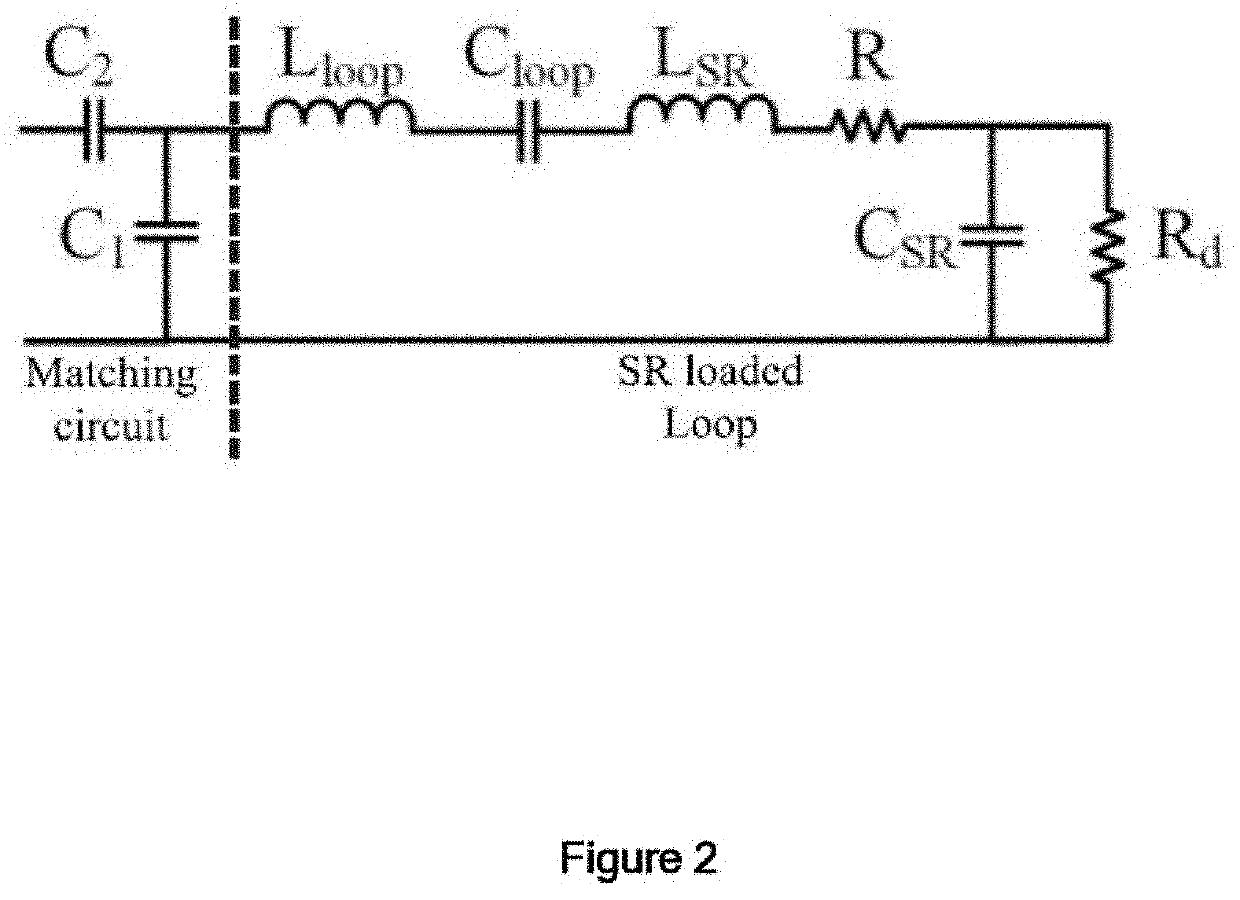High-resolution uhf near-field imaging probe
a near-field imaging and high-resolution technology, applied in the field of imaging, can solve the problems of reducing the penetration of signal into the test object, limiting the utility of the probe for imaging high-loss samples, increasing the implementation cost and complexity of the imaging system, etc., and achieves low complexity, high resolution, and high resolution.
- Summary
- Abstract
- Description
- Claims
- Application Information
AI Technical Summary
Benefits of technology
Problems solved by technology
Method used
Image
Examples
Embodiment Construction
[0108]Various small resonators can be used to construct near-field microwave imaging sensors. Circular / square SRRs, CSRRs, circular / square SR and Fractal Hilbert curves are some of the prominent examples of such small resonators. Selecting a certain resonator depends on the desired quality factor, miniaturization requirements, manufacturability, and feeding constrains. For near-field imaging, the sensor is ought to have small footprint and offer high sensitivity. Consequently, the spiral resonator types which offer significant miniaturization rate (resonator dimension of the order of 0.01, is highly feasible) and high Q-factor are suitable candidate for near-field imaging. Furthermore, the SR could be efficiently excited using a simple loop yielding a one-port sensor.
[0109]The proposed microwave imaging sensor utilizes an 8-turn square shaped resonator similar to the unit cell used in and shown in FIG. 1(a). The SR 102 was made of copper stripes laid on RO 4350 1.5 mm-thick dielectr...
PUM
 Login to View More
Login to View More Abstract
Description
Claims
Application Information
 Login to View More
Login to View More - R&D
- Intellectual Property
- Life Sciences
- Materials
- Tech Scout
- Unparalleled Data Quality
- Higher Quality Content
- 60% Fewer Hallucinations
Browse by: Latest US Patents, China's latest patents, Technical Efficacy Thesaurus, Application Domain, Technology Topic, Popular Technical Reports.
© 2025 PatSnap. All rights reserved.Legal|Privacy policy|Modern Slavery Act Transparency Statement|Sitemap|About US| Contact US: help@patsnap.com



